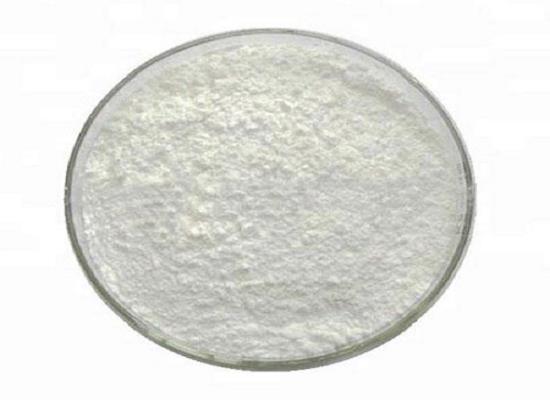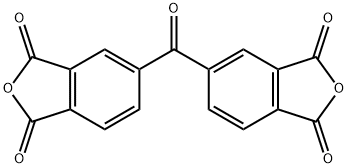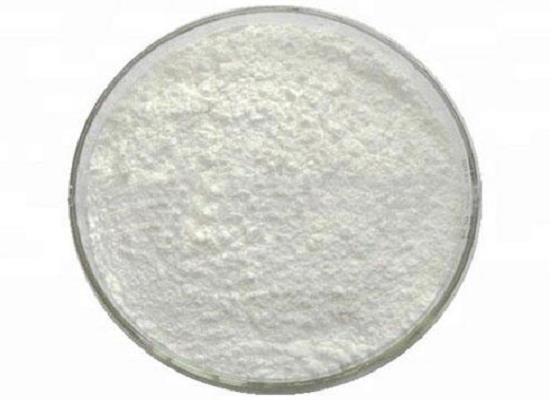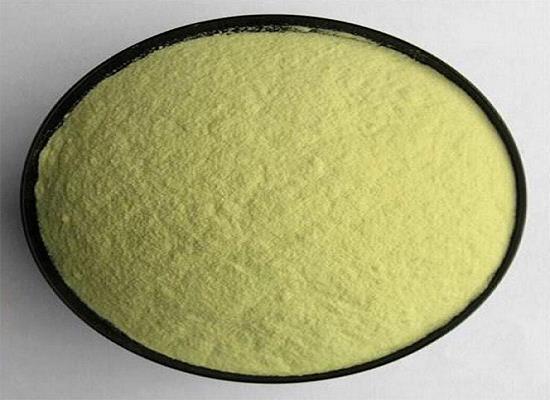3,3',4,4'-Benzophenonetetracarboxylic dianhydride: properties and applications in photoactive antibacterial cotton fabrics
General Description
3,3',4,4'-Benzophenonetetracarboxylic dianhydride is a chemical compound used in the production of polymers and coatings. It can be used as a cross-linker for wrinkle-resistant cellulosic fabrics without significantly compromising their mechanical properties. BPTCD-treated cotton fabrics exhibit increased carbonization rate and high degradation residues during thermal degradation. The compound also has photo-reactive properties, showing fluorescent effects under light irradiation. BPTCD-treated cotton fabrics have been found to possess excellent antimicrobial functions against both gram-positive and gram-negative bacteria under UVA light, reducing colony forming numbers by 99.99%.

Figure 1. 3,3',4,4'-Benzophenonetetracarboxylic dianhydride
Properties
3,3',4,4'-Benzophenonetetracarboxylic dianhydride is a chemical compound that is used as a raw material in the production of various polymers and coatings. It is a solid substance with a melting point of around 300-310°C and a molecular weight of 396.46. The compound consists of four carboxylic acid groups and two anhydride rings, which allows it to react with various nucleophilic reagents and form various polymers. It exhibits acidic properties due to the presence of four carboxylic acid groups. It can form salts with bases and act as a Lewis acid in chemical reactions. The anhydride rings of the compound are reactive and can undergo reactions with nucleophilic reagents, such as amine groups, to form amic acid derivatives. These derivatives can further react with other monomers or cross-linking agents to produce various polymers. It is commonly used as a monomer in the production of polyimides. It reacts with epoxy groups to form a cross-linked network structure, resulting in hardened resins with good mechanical and chemical resistance properties. Overall, 3,3',4,4'-benzophenonetetracarboxylic dianhydride is an important chemical compound that finds applications in various industries through its reactions with other reagents to produce high-performance polymers and coatings. 1
Application in photoactive antibacterial cotton fabrics
Preparation of incorporated cotton fabrics
The use of 3,3',4,4'-benzophenonetetracarboxylic dianhydride (BPTCD) as a cross-linker for wrinkle-resistant cellulosic fabrics has been studied. The anhydride structure reacts with the hydroxyl group in cellulose to form ester bonds. By treating cotton fabrics with a solution containing BPTCD and sodium hypophosphite, BPTCD cross-links with cellulose, leading to increased add-on percentage. FTIR spectroscopy was used to analyze the chemical structures of the treated fabrics. A new peak at 1727 cm-1, indicating the presence of ester bonds, was observed in samples treated with higher concentrations of BPTCD. The treatment demonstrated durable press properties, as shown in a recovery angle test. However, at lower concentrations of 3,3',4,4'-benzophenonetetracarboxylic dianhydride, there was minimal incorporation and low add-on rate on the fabrics. Only samples treated with higher concentrations showed significant wrinkle resistance. 2
Surface and mechanical properties
Durable press finished cotton fabrics always lose their tensile strength significantly after the treatment. Such strength losses are caused by acid catalyzed depolymerization of cellulose by the chemical agent and catalyst, especially under high temperature. Cross-linking of cellulose molecules increases the brittleness of cotton fibers and reduces the strength of the cross-linked fabrics as well. However, in this treatment, the BPTCD did not impair the mechanical properties of cotton fabrics, which was probably due to low acidity (pH is close to neutral) of the finishing solution. Increased BPTCD concentration in the finishing baths did not affect the tensile strength significantly. This is advantageous compared to other cross-linking agents on cellulose fiber, such as polycarboxylic acids and urea derivatives. Thermal degradation residue (%) of the cotton fabrics increases with increasing BPTCD concentration, while the decomposition temperature was decreased slightly. 3,3',4,4'-Benzophenonetetracarboxylic dianhydride serving as crosslinking groups in the treated cotton fabrics increased carbonization rate of the treated fabrics during the thermal degradation, leading to high degradation residues. The pristine cotton fabric showed the highest decomposition onset temperature and lowest degradation residues. 3
Photo-reactivity
3,3',4,4'-Benzophenonetetracarboxylic dianhydride may have a fluorescent effect under light irradiation. Chromophoric reactions of pristine cotton fabric and the BPTCD treated cotton fabric were observed by using a fluorescent microscope. It confirmed that benzophenone chromophoric groups were on the treated cotton fabrics, since it already observed that benzophenone chromophoric groups were activated by fluorescent as well as UVA light through previous study. On the other hand, antibacterial functions of BPTCD treated cotton fabrics were examined against E. coli and S. aureus. When UVA light irradiated the BPTCD treated cotton fabrics inoculated by E. coli and S. aureus, the colony forming numbers of the bacteria were significantly reduced, in a reduction rate of 99.99% for the sample treated with 0.2 mole of BPTCD. Therefore, it found that the 3,3',4,4'-benzophenonetetracarboxylic dianhydride treated cotton fabrics have the excellent antimicrobial functions against both gram positive and gram negative bacteria under UVA light. 4
Reference
1. Kochel K, Tomczyk MD, Simões RF, Frączek T, Soboń A, Oliveira PJ, Walczak KZ, Koceva-Chyła A. Evaluation of biological properties of 3,3',4,4'-benzophenonetetracarboxylic dianhydride derivatives and their ability to inhibit hexokinase activity. Bioorg Med Chem Lett, 2017, 27(3):427-431.
2. Revathi T, Thambidurai S. Synthesis of chitosan incorporated neem seed extract (Azadirachta indica) for medical textiles. Int J Biol Macromol, 2017, 104:1890-1896.
3. Kang, I. S., Yang, C. Q., Wei, W., & Lickfield, G. C. Mechanical strength of durable press finished cotton fabrics: Part I: Effects of acid degradation and crosslinking of cellulose by polycarboxylic acids. Textile Research Journal, 1998, 68:865–870.
4. Kyung HH, Gang S. Photoactive antibacterial cotton fabrics treated by 3,3'.4,4'-benzophenonetetracarboxylicdianhydride. Carbohydrate Polymers: Scientific and Technological Aspects of Industrially Important Polysaccharides, 2011, 84(3):1027-1032.
You may like
Related articles And Qustion
Lastest Price from 3,3',4,4'-Benzophenonetetracarboxylic dianhydride manufacturers

US $0.00-0.00/kg2025-10-27
- CAS:
- 2421-28-5
- Min. Order:
- 1kg
- Purity:
- ≥98%&99%&99.5%&99.8%
- Supply Ability:
- 30TM

US $10.00/ASSAYS2025-08-26
- CAS:
- 2421-28-5
- Min. Order:
- 1ASSAYS
- Purity:
- 99%
- Supply Ability:
- 1 ton



